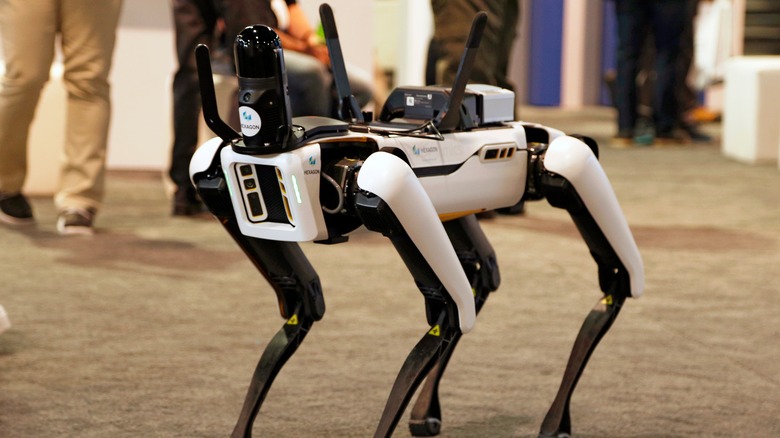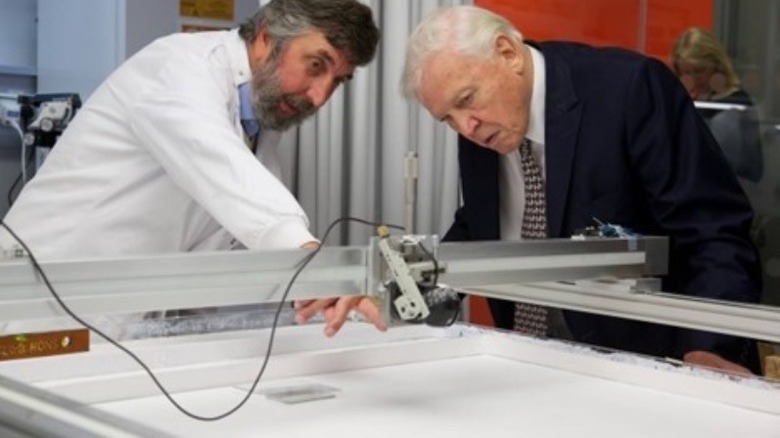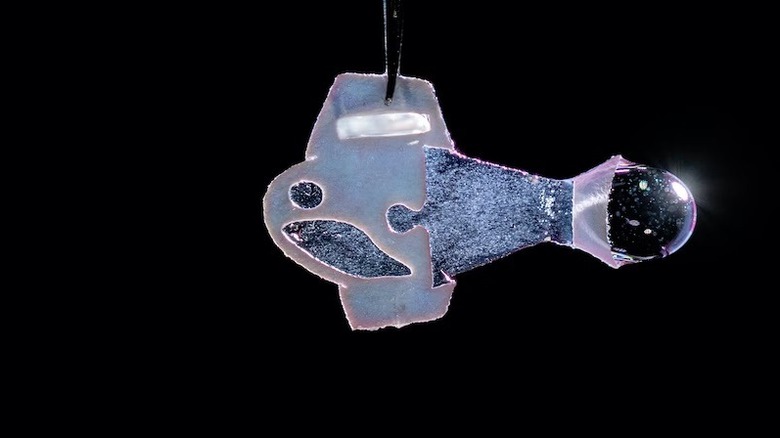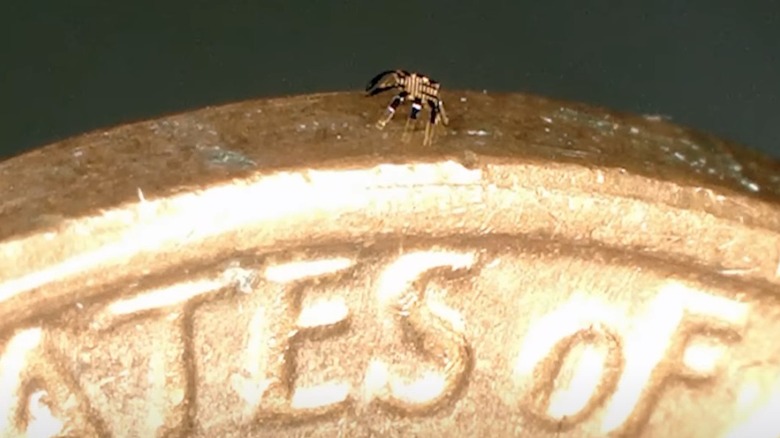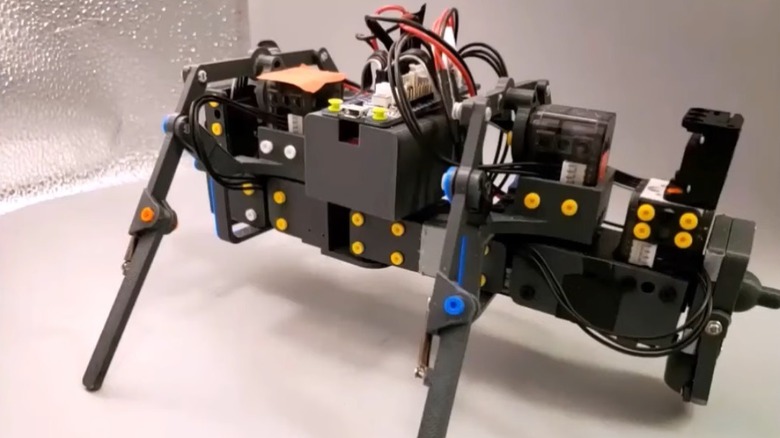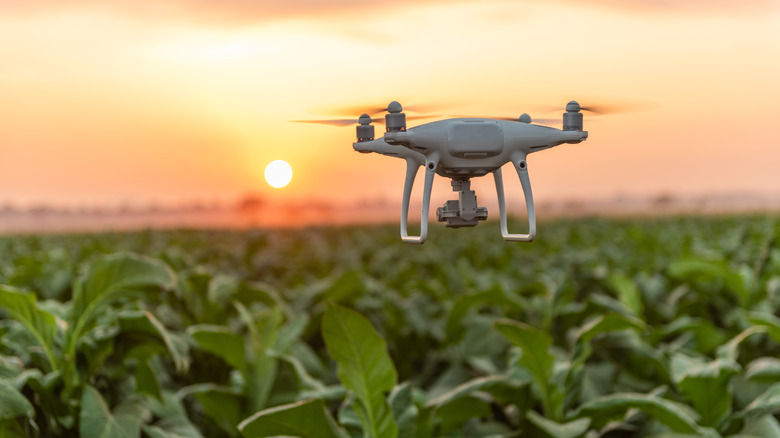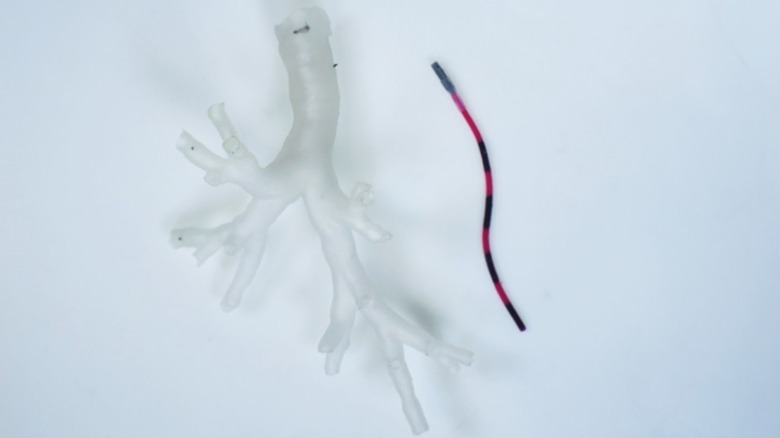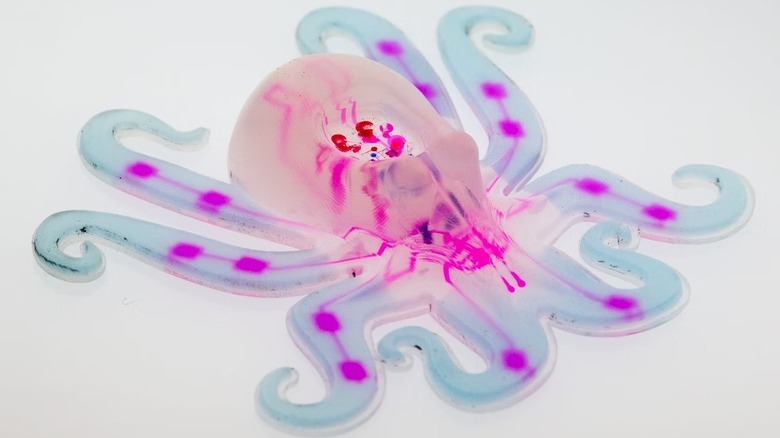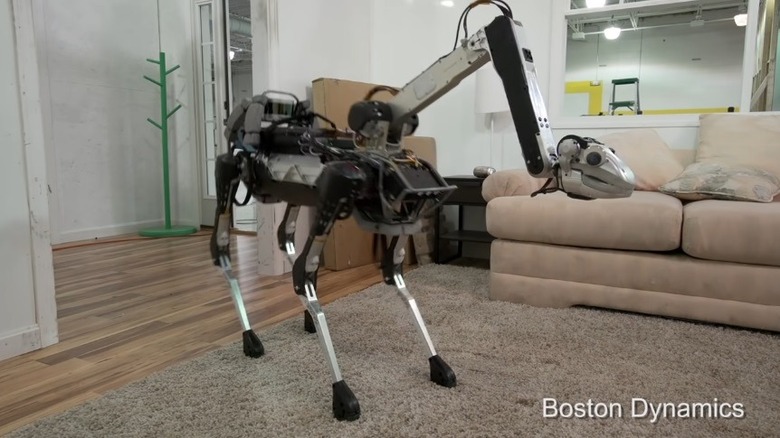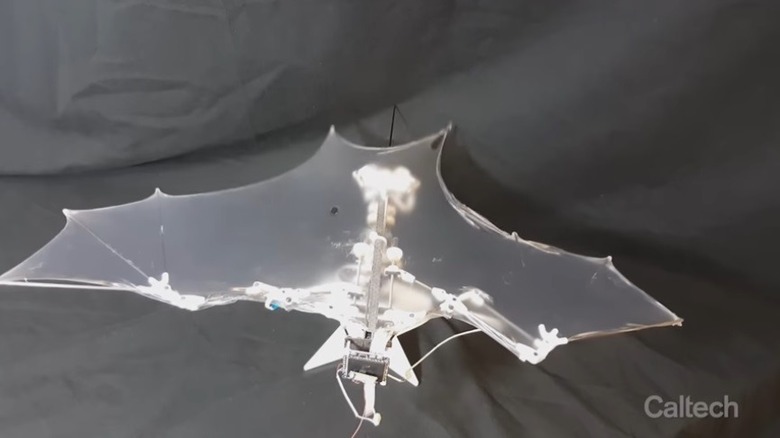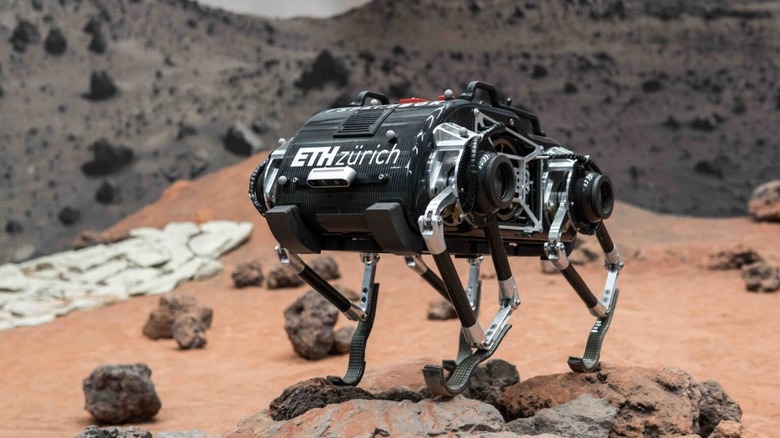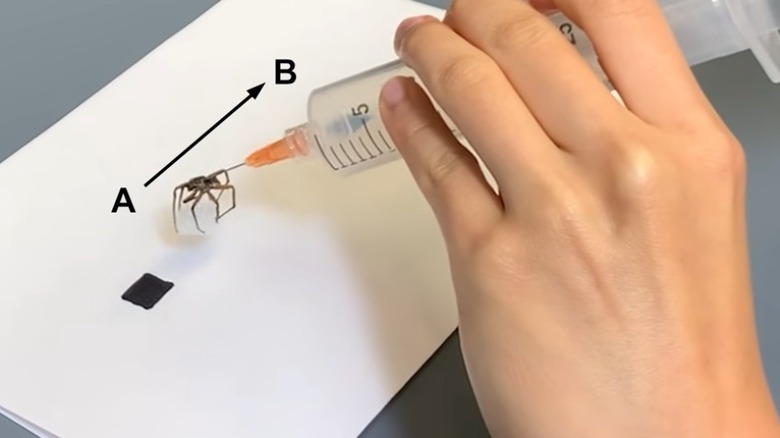Robotic Animals That Prove Technology Has Made Huge Leaps
Ever since robots were first introduced in Karel Čapek's 1920 play "Rossum's Universal Robots," we've imagined them as being nearly indistinguishable from biological life. Fiction is filled with all manner of robots behaving like humans and non-human animals, sometimes taking the place of loved ones, co-workers, or beloved pets. It turns out, however, that using technology to duplicate what nature has perfected through evolution is easier said than done. Our efforts to create those advanced robots have largely failed to meet expectations.
In recent years, that has started to change, with bio-inspired or semi-biological robots which look and behave an awful lot like real animals. When it comes to performing particular actions, it's difficult to improve upon 4 billion years of evolution, and roboticists around the world have looked to nature for inspiration, building machines made of metal and other materials which pay homage to our non-human neighbors.
Before long, if we're lucky (or unlucky, depending on if these robotic animals turn toward evil), we'll share our planet with a well-populated mechanical menagerie. These incredible animal robots are proof that it's already happening.
Robotic Ant Teacher
We usually think of robots as something we've designed to do work on our behalf. In this case, the robot was working not for us, but for ants. Rock ants, known by their scientific name Temnothorax albipennis, are well known for their ability to teach one another. When an individual ant finds a new nesting site that is better than their existing home, they go back to the colony, and grab one of their peers. The leading ant will then blaze a trail through the brush, making sure that the learner ant is following. Once they reach the new nest, the learner returns to the old nest, grabs another ant, and repeats the process. Eventually, through one-on-one instruction, every ant in the colony learns the new location, and moves.
Researchers at the University of Bristol wanted to find out if they understood the underlying mechanisms behind this teaching behavior, so they created a robotic ant to duplicate the process (via Journal of Experimental Biology). If you were to look at the robot, you wouldn't recognize it as an ant, but it was good enough for the colony. Scientists took the scent glands of a real ant, and placed them upon a gantry suspended over their experimental arena. Then, using their cyborg machine, they taught other ants how to find a better nesting site. Their robotic ant teacher was successful in replicating the teaching behavior observed in natural colonies.
Biohybrid Zebrafish
You wouldn't think that a tiny robotic fish could pave the way to an artificial heart for use in human patients, but that's exactly what scientists at Harvard are working toward. The heart is a complex biological machine in its own right, and scientists are hoping to build one from the ground up by understanding the constituent parts that make them up.
Strangely enough, the paired muscles of a fish's tail are similar in some respects to the paired muscle activity in the heart. Fish are capable of continuous swimming as a result of a mechano-electrical relationship between the two sides of their tail. When one side of the tail stretches, it triggers a contraction, and causes the other side to stretch, then the process repeats. It's similar to the way the heart manages continuous contraction.
With that in mind, scientists constructed a biohybrid zebrafish made of paper, gelatin, and human cardiac cells. When placed in a liquid cell media to keep the tissues fed, the fish were able to maintain continuous swimming for over 100 days (via Medgadget). The ability to build a system that self-regulates and achieves continuous activity could provide a foundation upon which a functional artificial heart could be developed.
Crab Microbot
Nature loves making crabs. For some reason scientists don't fully understand, there's a certain amount of evolutionary pressure pushing animals toward being crab-shaped. It has happened multiple times throughout history, so much so that some of the crabs you're familiar with aren't crabs at all. Instead, they're other types of crustaceans that are just doing a convincing crab impression (via PopSci). It turns out, being a crab is just an especially good way to get around.
It makes sense then, that when scientists wanted to build some of the smallest robots in existence, they modeled them after crabs. An international team of scientists built an array of sub-millimeter robots capable of bending and moving over surfaces in reaction to light.
Their robots were relatively simple in terms of construction, relying on no moving parts. Instead, they were inspired by pop-up books. Researchers cut out the basic shape of the robots before bonding them to a piece of stretched rubber. When the rubber relaxed, the robots deformed into their crab-like shape. Importantly, the material remembered its previously flat shape, and wanted to return to it. It just needed a little nudge. When researchers shone a laser light on the robots, the heat caused the materials to temporarily relax. Then, as they cooled, they deformed once more (via Science Robotics). The intermittent deforming and relaxing caused these microbots to crabwalk over surfaces. In the future, miniaturized robots like these could be used in medical treatments inside the body.
Robotic Ant Swarm
Ants have more to offer to the field of robotics, particularly in the way they cooperate to accomplish incredible feats more impressive than the sum of their parts. Not only do ants work together to carve out sprawling nesting complexes underground, but some species are also known for their ability to cooperate, expanding their domain beyond naturally occurring boundaries.
When the species Eciton hamatum sends their armies out into the world, they often encounter gaps too large for them to cross. When that happens, they band together (quite literally) to build living bridges, and create a new pathway with their own bodies (via Princeton). It's this cooperative ability scientists are hoping to duplicate in our machines.
Robots are famously good at doing specific jobs. Give a robot a set of instructions and an unchanging environment, and they'll work around the clock without complaint — but they struggle when they encounter conditions they weren't anticipating. Scientists from the University of Notre Dame and the Georgia Institute of Technology set out to tap into ant cooperation by building their own swarm of reconfigurable 3D-printed robots.
In experiments, individual robots would perform simple tasks on their own, but when they encountered a problem beyond their ability, they sent out a signal to their friends to come and join the fray. Groups of robots worked together to carry heavy loads or overcome obstacles. They even built bridges like their organic counterparts (via Sci.News).
Drone Scarecrows
Scarecrows are old technology, building facsimiles of humans in order to scare pest birds away from valuable crops. We've been using them in some form for at least 3,000 years (via Concord Monitor). But even scaring off birds has become something of a technological arms race, and modern farmers are looking toward more advanced systems to protect their harvests.
To that end, scientists are exploring the efficacy of unmanned aerial vehicles, more commonly known as drones or quadcopters, as the next generation of scarecrows. The word was published in Computers and Electronics in Agriculture. While drones are a common piece of technology, available at most big box stores and populating paper-covered boxes on birthdays and holidays, it's what scientists did to them that made them truly animal-like.
Rather than having a human controller, the drones were programmed to fly regular patrols, and scare off pest birds before they can wreak havoc on a growing field. Future versions of the system will incorporate even more animalistic features, including dressing the drones up to look like predatory birds, and speaker systems that play distress calls or predatory bird noises (via EurekAlert!). These futuristic scarecrows are just as likely to scare humans as they are pest animals, but at least we won't have to worry about our cereal crops.
Magnetic Tentacle Robot
There's considerable interest in developing machines capable of getting inside the nooks and crannies of the human body without having to use a scalpel. Today, when surgeons need to get inside the lungs, they use a thin, semi-rigid device that has to be manually fed into the airway, and down into the lungs (via Johns Hopkins Medicine). Depending on the tool in use, there is some risk of damage to the lung tissues as they navigate into the deeper recesses. In either case, a doctor risks fatigue during the laborious operation. Moreover, getting into certain areas can be limited by reduced degrees of freedom.
Scientists from the University of Leeds looked to the octopus, and other tentacled animals, for inspiration in designing the next generation of investigatory and therapeutic tools. Using a rubbery elastomer, the team created something similar to a conventional bronchoscope, but with enhanced functionality and maneuverability. A combination of flexible materials and magnetic particles, coupled with an external magnetic control system, allows the device to make its way deep into the lungs without being manipulated manually by a surgeon (via Medgadget).
Moreover, the process involves taking advance scans of the patient's lung anatomy, and building a navigational plan before the tentacle ever enters the airway. That means the movements of the tentacle are completely autonomous once it gets inside the body.
Soft Octobot
Robotic cephalopods won't only be making their way inside our bodies. If the Octobot is any indication, they'll be able to go just about anywhere. While robots have conventionally been imagined as rigid machines made of metal, the future of robotics might be a lot more like the T-1000 from "Terminator 2."
Cephalopods are impressive creatures not only because of their relative intelligence, but because their unique bodies allow them to squeeze into areas more rigid animals could never gain access to. Because an octopus has no hard body parts, aside from its beak, they are capable of getting into any tight space as long as the opening is larger than its beak (via Live Science). This level of maneuverability is of interest to roboticists for applications like search and rescue or exploration, where the ability to change the shape and configuration of the robot might come in handy.
Scientists at Harvard developed the world's first completely soft autonomous robot through a combination of 3D printing and fluid dynamics. A microfluid logic circuit printed inside the robot works like a circuit board, directing pressure to different parts of the robot as needed (via Harvard's Wyss Institute). A chemical reaction inside the robot changes a small amount of hydrogen peroxide into a comparably large amount of gas, which is pushed into the limbs. In this way, the limbs can be moved in various configurations.
SpotMini
Boston Dynamics made waves all over the internet, and the world, when it revealed the dog-inspired quadruped robot named Spot. While it looked like something out of a dystopian nightmare, it was capable of maneuvering over varied terrain, and recovering from stumbles and falls.
Then, in 2016, the company revealed an updated version called SpotMini (via IEEE Spectrum). Notably, since that time, SpotMini has usurped its predecessor, and become the one true Spot. What made SpotMini incredible and more than a little bit terrifying was the almost recognizable head and neck they tacked onto its body.
In comparison to the original Spot, SpotMini was considerably lighter, coming in at 65 pounds with the head attachment. Most of Boston Dynamics' robots are headless, but SpotMini had a long arm with two points of articulation sprouting from just above the shoulders and a clawed hand at the end, complete with a couple of googly eyes to mount it firmly inside the uncanny valley.
In more recent versions, Boston Dynamics has largely abandoned the long neck and head in favor of an array of sensory attachments including laser scanners, thermal sensors, radiation detectors, and iPad mounts so you can slap your own face on a dog-shaped telepresence robot (via Boston Dynamics).
Bat Bot (B2)
The Bat Bot, otherwise known as B2, is ostensibly built in order to give scientists a better understanding of how bats maneuver through their environment. We can't help but wonder, however, if they did it mostly because it was cool.
Bats are notoriously uncooperative, as is the case with most wild animals, when you want to study the finer details of how they move around. Building a synthetic analog allows scientists to probe and investigate to their hearts' delight without needing to worry about the feelings or well-being of the target animal (via Secemu).
The Bat Bot is surprisingly effective, both aesthetically and mechanically. It is built upon an exoskeleton that mirrors, to some degree, the skeletal architecture of a living bat. On top of that, researchers attached a flexible material that likewise mirrors the stretching and flexing of a bat's wings.
Unlike other flying machines that rely on rotors to keep them aloft, the B2 flies the same way a bat or a bird does, by flapping its wings. While it's not quite as good at flying as its namesake, if seen at a distance, you might have a hard time distinguishing it from the real thing. At least, as long as you caught a glimpse of the dark-colored version and not its ghostly, semi-transparent sibling.
SoFi, the Soft Robotic Fish
When exploring natural environments, there's always the risk that the simple presence of humans will change or negatively impact what we're trying to observe. Scientists are always on the lookout for better ways to investigate natural phenomena while minimizing our impact. Placing cameras or sensors goes some way toward achieving this goal, but they are limited in their scope, especially in an underwater environment where the exploratory arena extends in every direction.
To that end, roboticists at MIT have created SoFi, a soft robotic fish designed to explore aquatic environments. Equipped with onboard sensors and a camera, SoFi utilizes natural motions to more seamlessly integrate into an ocean environment. Moreover, it benefits from being totally untethered.
A remote operator sends acoustic signals to the robot, which direct it to change speed, make turns, or dive up to 18 meters deep. During experiments, the robot was capable of successfully navigating the complex environment of a coral reef, all while avoiding the other organisms living there (via MIT).
Future researchers will use SoFi to explore the ocean without human interference, and may even involve large schools of robotic fish all working in tandem.
SpaceBok
Dogs famously went to space before humans ever could, and now dog-shaped robots might be heading there, too. Certainly, we've sent a number of robots into the inky darkness of space, and to other worlds. Myriad probes and rovers have been launched over the years, even to the edges of interstellar space, at least in the case of the Voyager spacecrafts.
For the most part, those probes have looked like vehicles — in the case of the Mars rovers — or else were bespoke spacecrafts resembling little else we've ever built. Biologically inspired robots offer a unique opportunity to put something a little more dynamic on another world without risking the lives of astronauts. Doing so, however, presents some unique challenges.
When astronauts first went to the moon, they quickly realized that walking as they would on Earth wasn't necessarily the best way to get around as a result of the lower gravity (via Universe Today). That's where SpaceBok comes in.
It's a quadruped robot built by a student team from ETH Zurich and ZHAW Zurich, and designed to take advantage of dynamic gaits wherein all four limbs sometimes leave the ground (via ESA). Animals on Earth sometimes take advantage of similar gaits due to their efficiency, but until recently, the programming necessary to achieve them in robots was elusive. With any luck, SpaceBok will be hopping on the moon, Mars, or asteroids sometime in the relatively near future.
Spider Necrobots
You truly can't have a more lifelike robot than one which is made from the slowly decaying flesh of a dead animal. Scientists from Rice University set out on the utterly macabre endeavor of giving dead spiders a second life as robotic grippers, by taking advantage of their naturally occurring hydraulic systems. The results of their study were published in the journal Advanced Science.
You've probably noticed that when spiders die, their legs curl toward the underside of their bodies. That's because they don't have antagonistic muscle pairs. It's sort of like having biceps, but no triceps. They only curl one way without some additional force. In life, spiders use hydraulics to extend their legs, but that system fails when they die.
Scientists gave their corpses an alternative hydraulic system by inserting a syringe, and deploying a small amount of air to the body cavity. As a result, all of the legs extended, then closed again when the pressure was released. Despite being entirely creepy, researchers think these kinds of necrobotic grippers could be useful for carrying fragile cargo like biological samples gathered in the field. Nature already perfected spiders for grabbing hold of small animals, all we're doing is putting them to work once they're dead.
